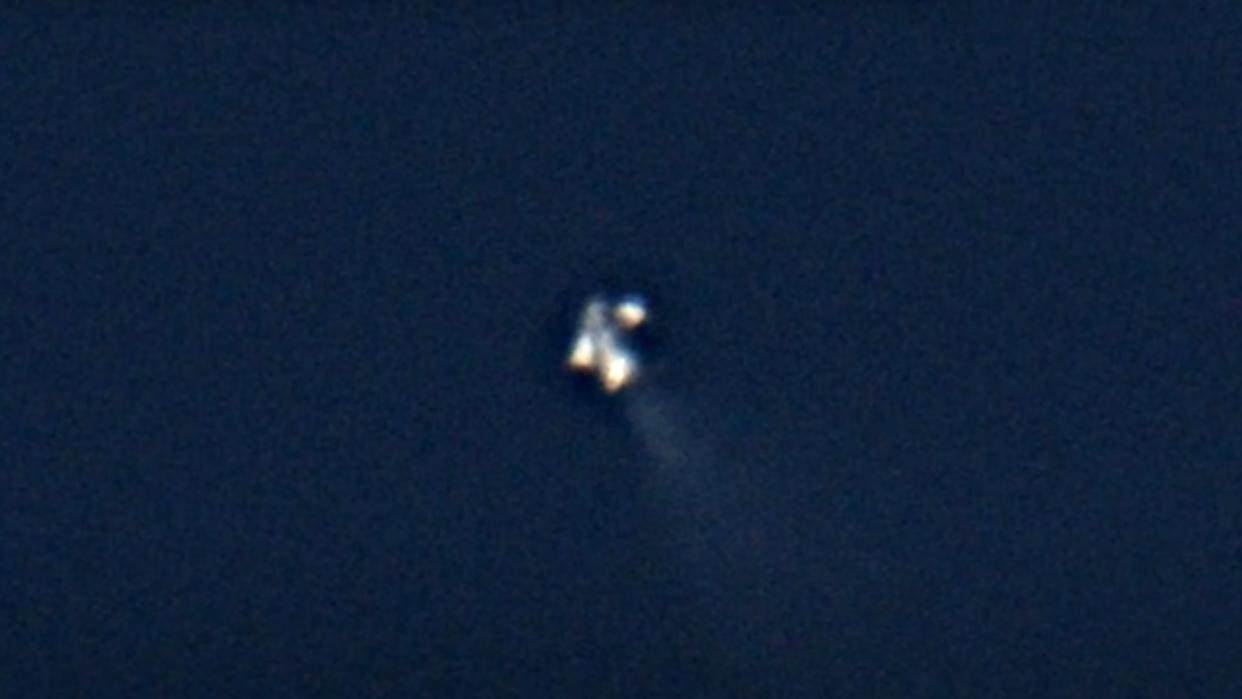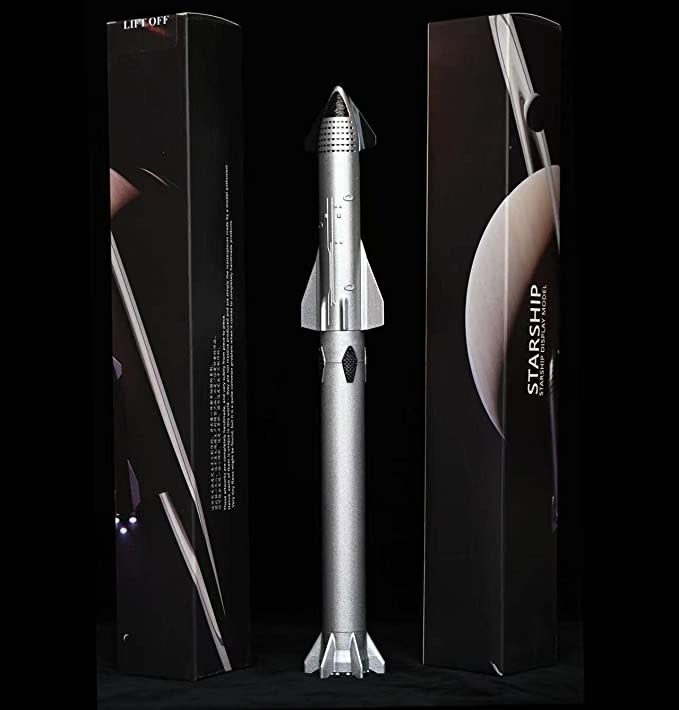Watch SpaceX's Starship explode in astronomer's stunning telescope footage (video)

The second test flight of SpaceX's Starship was a photogenic one.
On Saturday (Nov. 18), the massive Starship rocket launched for the second time ever, lifting off from SpaceX's Starbase facility in Boca Chica, Texas. The Super Heavy booster of the 400-foot-tall (122 meters) rocket exploded shortly after stage separation, while the upper-stage Starship vehicle reached an altitude of 91 miles (148 kilometers), well above the 62-mile (100 km) boundary of space before it, too, experienced what SpaceX refers to as a "rapid unscheduled disassembly."
Despite both parts of the vehicle exploding, SpaceX considers the test flight a success. "All 33 Raptor engines on the Super Heavy Booster started up successfully and, for the first time, completed a full-duration burn during ascent," SpaceX wrote in a recent mission update.
As spaceflight fans and photographers around Boca Chica pointed their cameras to the skies to document the spectacle, Scott Ferguson of Astronomy Live was watching from much farther away with a different kind of instrument: A telescope. Observing from the village of Islamorada in the Florida Keys, Ferguson captured an incredible view of Starship's upper stage as it exploded in suborbital space.
Related: SpaceX's 2nd Starship launch test looks amazing in these stunning photos and videos

Ferguson told Space.com via email how he captured this incredible footage.
"I had planned this shot for the last couple of years," he wrote. "I came up with the idea when I realized that Starship should fly close enough to the Florida Keys to be well above the horizon during the second-stage burn. I wrote a program for tracking rocket launches that I have used many times for filming launches from Cape Canaveral, normally by using a combination of video-based tracking or joystick-based tracking.

Starship Die Cast Rocket Model Now $69.99 on Amazon.
If you can't see SpaceX's Starship in person, you can score a model of your own. Standing at 13.77 inches (35 cm), this is a 1:375 ratio of SpaceX's Starship as a desktop model. The materials here are alloy steel and it weighs just 225g.
Note: Stock is low so you'll have to act quickly to get this. View Deal
"I realized that Starship would likely launch out of Boca Chica during the day, so I expanded my program's capabilities by writing a predictive tracking feature that uses trajectory predictions from the website FlightClub.io so that the telescope will track where it expects the rocket to be even before it's visible. I still wasn't sure if Starship would reflect enough sunlight to be visible during the day from the Keys, but I decided it was worth the risk.
"On the day of the launch, I called a friend who was watching the launch in person from Boca Chica, so that he could call out the moment of launch and I could sync the start of the tracking to that moment without any internet streaming delay from the webcast. I just had to hope the first stage of the flight went off without a hitch this time; IFT-1 [Starship's first test flight, which launched on April 20] never rose above the horizon for me in Florida, and it wouldn't be until 5 minutes into flight that Starship would even reach the horizon from the Keys. Minute after minute, I kept hearing reports that all the engines were still running on the first stage.

"Then the hot staging happened without issue. My excitement kept building. First stage explodes. No issue for me; it did its job sending Starship on its way. Then as Starship rose my heart sank when I could not see anything against the blue sky. Just when I thought it was over, I saw a cloud suddenly appear in the finder camera. I knew it had to be Starship, so I quickly moved the telescope with the joystick to put it in frame.
RELATED STORIES:
— Epic 33-engine burn among successes of Starship's 2nd test flight, SpaceX says
— SpaceX's epic Starship liftoff didn't damage launch pad, Elon Musk says
"There it was, spinning out of control, spewing clouds of gas in multiple directions. I realized the cloud I saw was probably the flight termination system destroying the vehicle, yet it looked to me like the whole thing was still intact. I thought the flight termination system had failed to blow it up, much like IFT-1. It wasn't until I got home and reviewed the footage that I realized it was just the front nose section and forward flaps that were still relatively intact.
"SpaceX has since asked if I would be willing to provide the video to them, and I have already sent them the stabilized version of the footage. I am just now completing the upload of the original raw file from the camera, so that they can perform their own analysis of the footage."
See more of Scott Ferguson's work at the Astronomy Live YouTube channel or on X (formerly known as Twitter). Ferguson thanks @TechSpatiales on X for his work stabilizing the footage.

